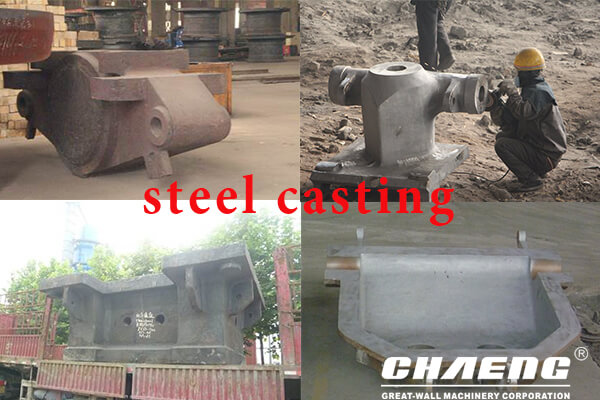Industry Reports
Comparison of steel castings and cast iron parts
Cast iron: The cast iron parts are relatively wear-resistant when used, but their strength is relatively low, the moldability and toughness are relatively poor, and the weldability is also somewhat poor. In the Han Dynasty of China, cast iron technology was also available, and cast iron pieces of spheroidal graphite were also cast. Generally, the annual output of cast iron in a country is 1/10~1/7 of the output of cast steel, and the tensile strength of cast iron is also increased to ten times in the original 80 MPa. Cast iron is generally determined by graphite precipitation to determine gray cast iron or white cast iron.
Cast steel: The annual output of steel castings in some industrial countries accounts for about 2% of the total steel. It is mostly used in railways, construction or metallurgical machinery, heavy mining machinery or the manufacturing sectors used by ships.

Compared with steel rolling parts, steel castings have many advantages:
(1) Steel castings are subject to size or weight restrictions. The single weight can be large or small, and it is easy to cast more complicated shapes;
(2) Steel castings can also reduce the amount of machining of mechanical cutting, and also improve the utilization of metal;
(3) Forming alloy steel that is difficult to plastically deform and cut;
(4) The axial performance or lateral performance difference of general rolling is slightly larger, and cast steel has no such directionality;
(5) The grain of the cast steel is coarser than that of the already deformed steel, and the high temperature strength and the creep property of the alloy heat-resistant cast steel are both higher than the rolling.
The looseness existing in the cast steel also has problems of segregation, shrinkage and defects such as bubbles, impurities or coarse crystals, and these defects are also welded or refined to the deformed steel during the rolling process. Enhanced methods that cannot be used for cold working to improve performance. Therefore, its mechanical properties are mainly based on plasticity or toughness, which is slightly lower than that of the same type of steel. The larger the part, the greater the difference, and the wear resistance or the performance of the weldability to be cut will not be significantly different from the rolled material. The performance of steel castings is significantly better than that of cast iron and can be welded, but at a higher cost than cast iron.



